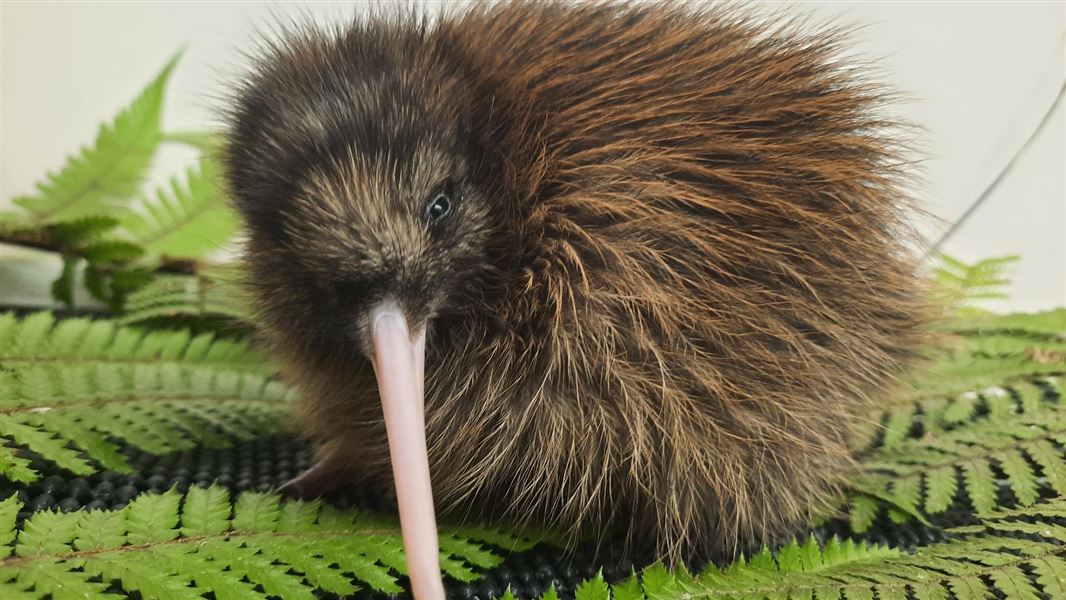Archived content: This media release was accurate on the date of publication.
Date: 28 September 2022
Haast tokoeka are one of our rarest kiwi with a population of about 550 birds. The chick was born earlier this month in the Haast Kiwi Sanctuary where most Haast tokoeka are found.
DOC actively manages the areas where Haast tokoeka live. This includes running trap lines across 12,000 ha of land to kill stoats which are the main cause of death for chicks.
During monitoring trips earlier this year 34 additional birds were caught, fitted with transmitters and released in the Sanctuary, Olivine Range and Junction Hill.
Inanga’s’ father was among them. He was found in the Waiatoto River area which lies within the Sanctuary
DOC Senior Ranger Biodiversity Tracey Dearlove says three of the birds caught in the sanctuary were juveniles.
“Their weights indicate that one was from last season and two from the season before. That’s a good sign predator control is working.”
Tracey Dearlove says over 20 years of work has gone into getting the tokoeka population to where it is today.
“Since 2018, the emphasis has been on managing Haast tokoeka at place through trapping and periodic use of aerial predator control on a landscape scale.
“Last year the tokoeka population threat level was downgraded to Threatened – Nationally Vulnerable from Nationally Critical due to a combination of successful conservation management and discovery of a new population at Junction Hill.”
Some egg and chick removal for captive rearing and transfer to predator free islands (ONE) continues in unmanaged sites to ensure that maximum genetic diversity of Haast tokoeka is retained.
Tracey Dearlove says the key factor driving the population of Haast tokoeka is the very high rate of adult survival with a remarkable average life expectancy of 61 years. Tokoeka are also naturally slow breeders.
“Adult survivorship is very important as the death of any adult puts big pressure on the population. Dogs and ferrets are the biggest threat to adult kiwi so it’s vital to minimise that risk.”
Most of the monitoring work to capture new monitored birds was done on night trips with the help of kiwi dogs. Some of the birds were fitted with transmitters before being released. Acoustic recorders were also deployed as part of ongoing monitoring.
Much of the work was carried out with Save our Iconic Kiwi funding.
Contact
For media enquiries contact:
Email: media@doc.govt.nz
